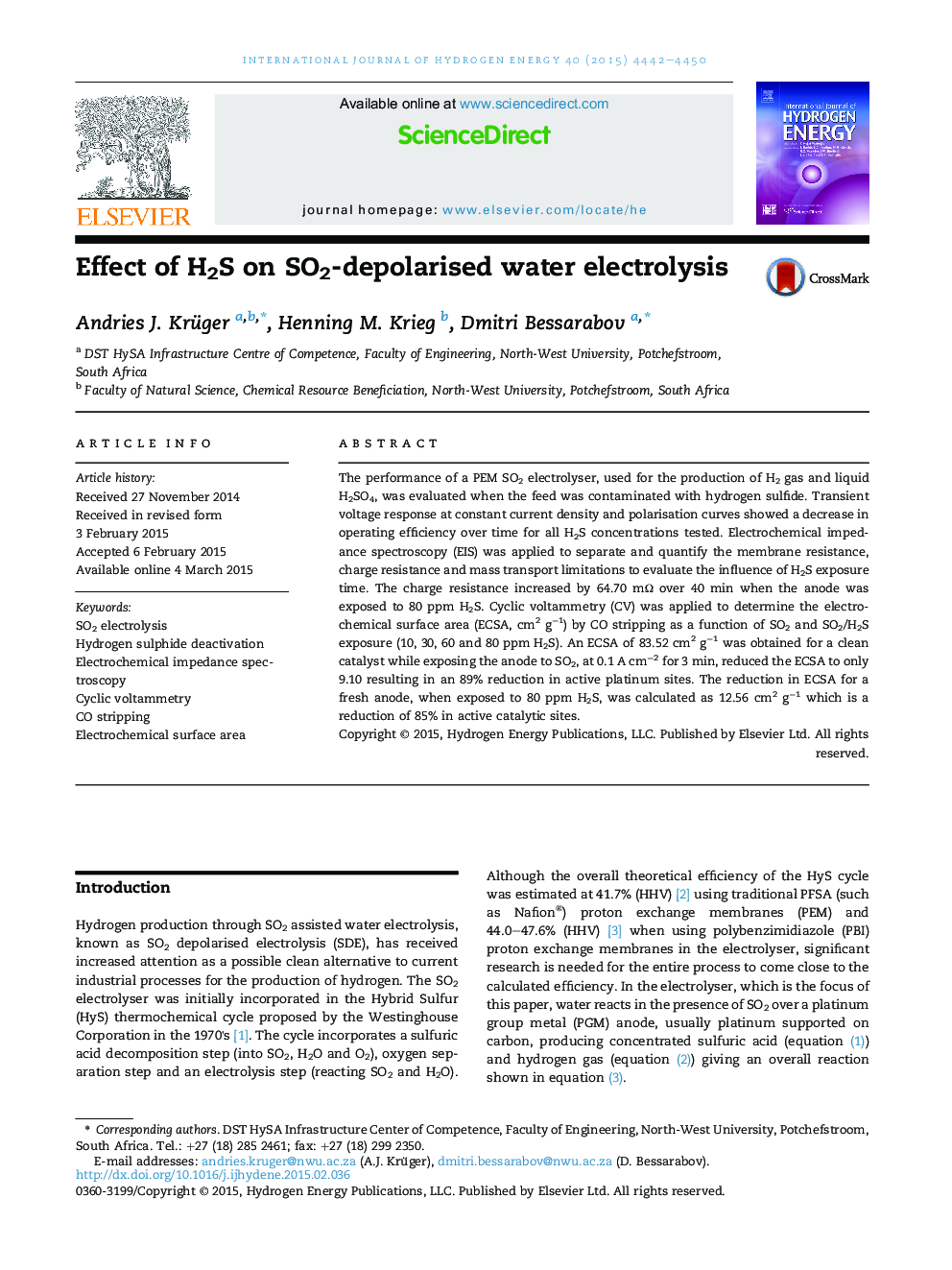| Article ID | Journal | Published Year | Pages | File Type |
|---|---|---|---|---|
| 7715789 | International Journal of Hydrogen Energy | 2015 | 9 Pages |
Abstract
The performance of a PEM SO2 electrolyser, used for the production of H2 gas and liquid H2SO4, was evaluated when the feed was contaminated with hydrogen sulfide. Transient voltage response at constant current density and polarisation curves showed a decrease in operating efficiency over time for all H2S concentrations tested. Electrochemical impedance spectroscopy (EIS) was applied to separate and quantify the membrane resistance, charge resistance and mass transport limitations to evaluate the influence of H2S exposure time. The charge resistance increased by 64.70 mΩ over 40 min when the anode was exposed to 80 ppm H2S. Cyclic voltammetry (CV) was applied to determine the electrochemical surface area (ECSA, cm2 gâ1) by CO stripping as a function of SO2 and SO2/H2S exposure (10, 30, 60 and 80 ppm H2S). An ECSA of 83.52 cm2 gâ1 was obtained for a clean catalyst while exposing the anode to SO2, at 0.1 A cmâ2 for 3 min, reduced the ECSA to only 9.10 resulting in an 89% reduction in active platinum sites. The reduction in ECSA for a fresh anode, when exposed to 80 ppm H2S, was calculated as 12.56 cm2 gâ1 which is a reduction of 85% in active catalytic sites.
Keywords
Related Topics
Physical Sciences and Engineering
Chemistry
Electrochemistry
Authors
Andries J. Krüger, Henning M. Krieg, Dmitri Bessarabov,
